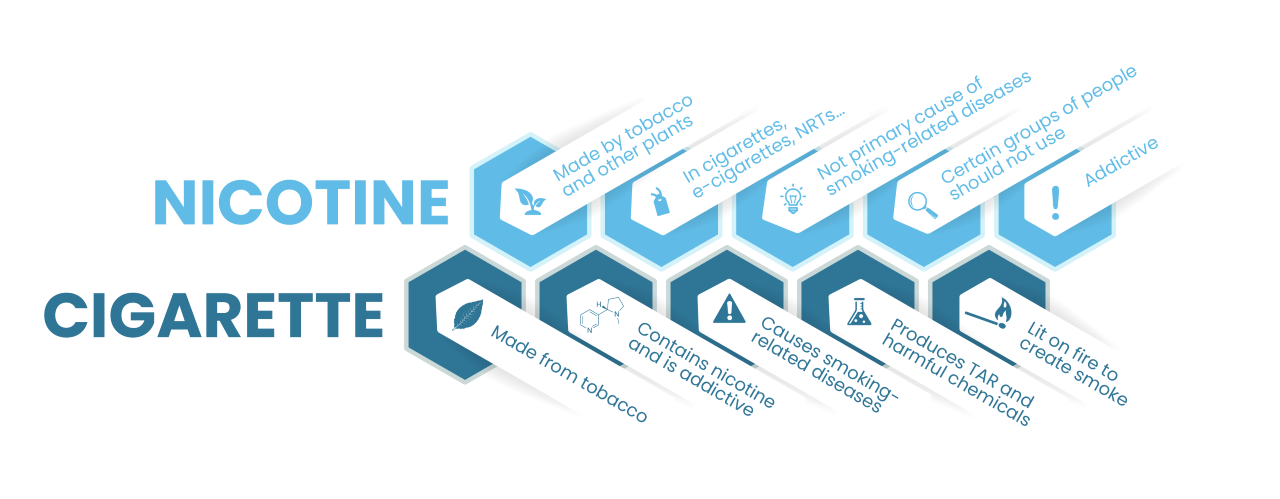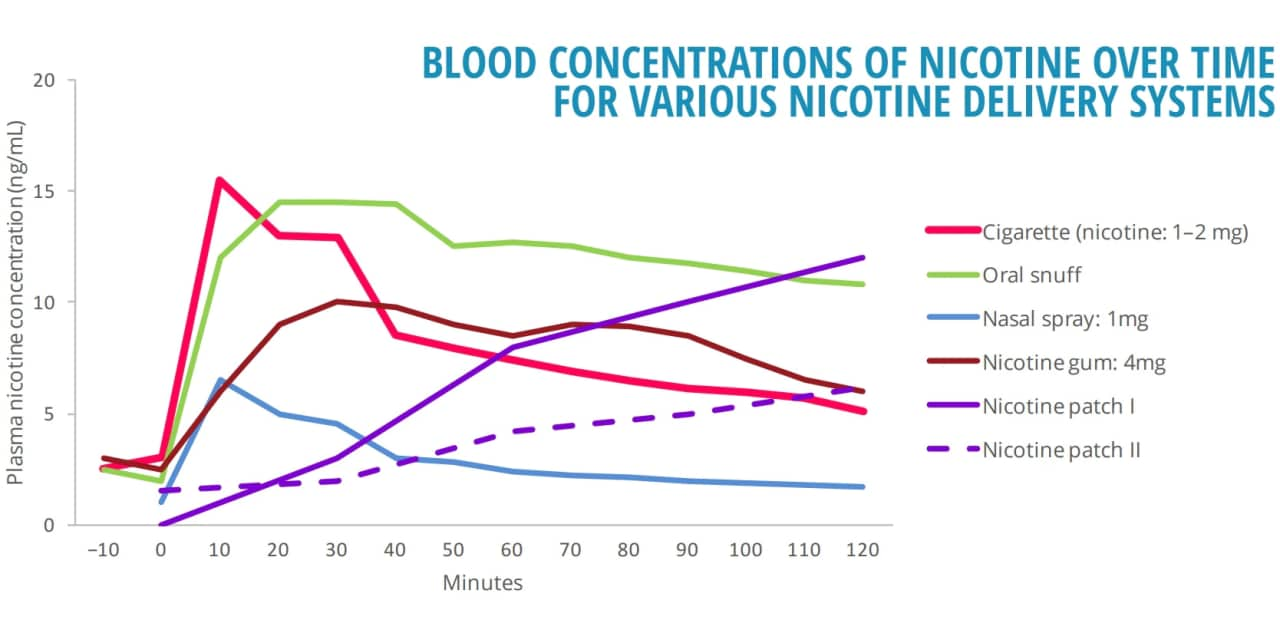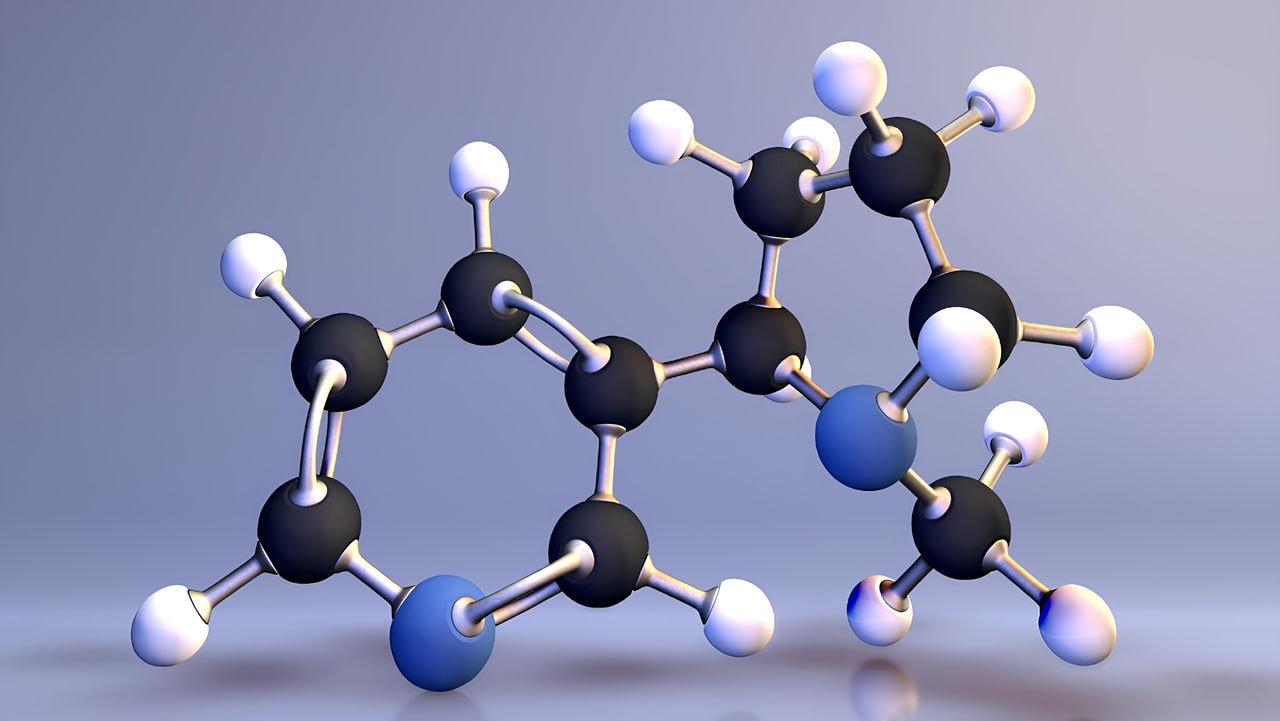Nicotine and Addiction
This article is part of a larger feature. The opening sections preceding this article are about how nicotine is created and its journey within the body.
It has been recognized that the addictive properties of cigarette smoking are caused by a complex interaction of factors that enhance the action that would be caused by nicotine alone. Exposure to nicotine and the extent of its effects can also be influenced by individual differences in smoking behavior, metabolism, body mass index (BMI), and genetic differences. While nicotine is the focus of this review, other factors also make smoking addictive: ritual, sensory experience, and social experiences all play a significant role.
Once nicotine enters the brain, it modulates the reward systems via its binding to specific nicotinic acetylcholine receptors (nAChRs) distributed in certain regions of the brain. A chronic exposure to nicotine results in tolerance, a decreased response of some kind to the same dose of nicotine. It also results in sensitization, which is an increased response of some kind to the same dose of nicotine. These changes in response underlie the development of dependence, and they can lead to temporary withdrawal symptoms when one tries to quit.
Regarding terminology, nicotine dependence is described by the World Health Organization (WHO) as “a disorder of regulation of nicotine use arising from repeated or continuous use.”(1) “Tobacco use disorder” is the relevant term described by the American Psychiatric Association in their Diagnostic and Statistical Manual of Mental Disorders.(2)

Withdrawal symptoms are another concern for about half of smokers when they initially quit smoking, including difficulty concentrating, anxiety, and dysphoria (meaning distress or discomfort with life).(3) While quitting smoking can be difficult, it is very much possible, and millions of smokers quit every year. Nicotine replacement therapies (NRTs) and other cessation products can help address withdrawal symptoms if they occur.
One critical factor in nicotine dependence is the dose and rate of nicotine delivery. Because smoking delivers nicotine to the brain very efficiently, products that rapidly deliver peak doses of nicotine, like sprays and inhalers, are more satisfying to smokers than those that slowly deliver nicotine at much lower doses like gums and patches.(4)
Levels of nicotine in the blood: not all products are equal
Many people assign most of the addictive power of cigarettes to the rapid absorption of nicotine through the lungs. When someone smokes a cigarette, their blood nicotine levels peak in about six to ten minutes. Then, the level of nicotine in the blood drops by about half every two hours on average, as the body naturally clears the nicotine from its system.(5) Most NRTs don’t provide the same pharmacokinetic profile as cigarettes,(6) making them less likely to satisfy a smoker.
Our Electrically Heated Tobacco System (EHTS) product, on the other hand, creates a nicotine profile like that of a cigarette.(7) In two studies in Japan, the peak concentration of nicotine in the blood occurred about six minutes after starting product use and reached more than 88% of the level reached with cigarettes. This likely comes even closer to 100% as the user becomes more familiar with the product, while participants in this study had only used the product during a product trial at the start of the study and during the assessment of the nicotine uptake. Subjectively, the people who used EHTS instead of a cigarette also found that the product reduced their urge to smoke similarly to cigarettes. We have also completed a pharmacokinetic study for our Carbon-Heated Tobacco Product (CHTP), but the results are not yet publicly available.

We’ve also tested the pharmacokinetics for two versions of our nicotine salt e-vapor product. In one version, the peak nicotine concentration occurred about seven minutes after the start of product use.(8) This is much closer to the nicotine pharmacokinetics profile of a cigarette than the nicotine inhalator, which peaked at about 30 minutes. Another variant was found to cause the nicotine peak between 15 and 22 minutes during a single use of the e-vapor product. The level of nicotine depended on how the user puffed on the product.(9) This is unlike EHTS or cigarettes, which both provide a peak nicotine concentration within 6 to 10 minutes after product use begins.

Adapted from figure 4.1 in: How Tobacco Smoke Causes Disease: The Biology and Behavioral Basis for Smoking-Attributable disease: A Report of the Surgeon General.(6)
The pharmacokinetic profile for MESH is very similar to the profile created by smoking a cigarette and the study subjects’ preferred e-cigarette. Further, participants who used MESH rather than their own brand of e-cigarettes had a reduced nicotine craving over the next few hours after product use, comparable to that achieved with the study subjects’ preferred e-cigarette.(10)

Read the Scientific Update magazine
The Scientific Update magazine is focused on PMI's research and development efforts, milestone studies, industry regulations, and more. View the latest issue, or read the articles online.



